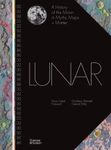![Asteroseismology Asteroseismology]()
Click to have a closer look
About this book
Contents
Customer reviews
Biography
Related titles
About this book
The recent research domain of asteroseismology refers to the study of the internal structure of pulsating stars through the interpretation of their frequency spectra. Asteroseismologists make great use of the oscillations to probe the stellar interior, which is not directly observable. The basic principles of asteroseismology are very much alike those developed by earth seismologists.
No part of the Universe is more difficult to observe directly than the interior of the stars. The reason why stellar interiors can be probed from oscillations is that different oscillation modes penetrate to different depths inside the star. Asteroseismology is the only available method so far to derive the internal structure of the stars with high precision.
Oscillations can be excited in stars when thermal energy is converted into kinetic energy of pulsation. Similarly as for any heat engine, this proces is effective if heat is absorbed in the high temperature phase of oscillation and emitted when the temperature is low. The main mechanism for stars is the net conversion of radiation energy into pulsational energy in the surface layers of some classes of stars. The resulting oscillations are usually studied under the assumption that they are small, and that the star is isolated and spherically symmetric.
Contents
1 Introducing Asteroseismology.- 1.1 Introduction.- 1.2 1-D Oscillations.- 1.3 2-D Oscillations in a Drum Head.- 1.4 3-D Oscillations in Stars.- 1.5 An Asteroseismic HR Diagram for p-Mode Pulsators.- 1.6 A Pulsation HR Diagram.- 2 Stellar Oscillations across the Hertzsprung-Russell Diagram.- 2.1 Stellar Evolution in a Nutshell.- 2.2 Variability Studies from Large-Scale Surveys.- 2.3 Oscillations Near the Main Sequence.- 2.4 Oscillations in Pre-Main-Sequence Stars.- 2.5 Pulsations in Evolved Stars with M ae 9M.- 2.6 Pulsations in Evolved Stars with M ae 9M.- 2.7 Compact Oscillators.- 2.8 Pulsations in Binaries.- 2.9 Conclusions.- 3 Theory of Stellar Oscillations.- 3.1 General Hydrodynamics.- 3.2 Equilibrium Stellar Structure.- 3.3 Equations of Linear Stellar Oscillations.- 3.4 Asymptotic Theory of Stellar Oscillations.- 3.5 Computed Properties of Modes of Oscillation.- 3.6 Variational Properties of Stellar Adiabatic Oscillations.- 3.7 Driving Mechanisms.- 3.8 Effects of Rotation.- 4 Observational Techniques.- 4.1 Duty Cycle.- 4.2 Time.- 4.3 Photometry.- 4.4 Spectroscopy.- 5 Frequency Analysis.- 5.1 Harmonic Analysis by Least Squares.- 5.2 Non-parametric Frequency Analysis Methods.- 5.3 Parametric Frequency Analysis Methods.- 5.4 Significance Criteria.- 5.5 Error Estimation of the Derived Frequencies.- 5.6 The use of Weights in Merging different Data Sets.- 5.7 Damped Oscillations.- 5.8 Eliminating Aliases.- 5.9 Conclusions.- 6 ModeIdentification.- 6.1 Mode Identification from Multicolour Photometry.- 6.2 Mode Identification from High-Resolution Spectroscopy.- 6.3 Mode Identification from Combined Photometry and Spectroscopy.- 6.4 Towards Mode Identification from Combined Interferometry and Spectroscopy?.- 6.5 Towards Mode Identification from Eclipse Mapping?.- 7 Applications of Asteroseismology.- 7.1 Helioseismology.- 7.2 Solar-Like Pulsators.- 7.3 Heat Driven Main Sequence Stars.- 7.4 Compact Pulsators.- 8 The Future.- 8.1 Space Missions.- 8.2 Ground-Based Networks and Antarctica.- A Summary of the Different Classes of Stellar Pulsators.- B Properties of Legendre Functions and Spherical Harmonics.- C Mathematical Preliminaries.- D Adiabatic Oscillations in an Isothermal Atmosphere.- E Asymptotic Theory of Stellar Oscillations.- Bibliography.- Subject Index.- Object Index.- Acronym Definition Index.
Customer Reviews
Biography
Conny Aerts is full professor at the University of Leuven, Belgium, as well as professor by special appointment on the Chair Asteroseismology, University of Nijmegen, The Netherlands. Jorgen Christensen-Dalsgaard is full professor of helio- and asteroseismology at Aarhus University, Denmark. Don Kurtz is full professor at the University of Central Lancashire, UK. Their collective expertise encompasses all aspects of asteroseismology. All three authors are experienced lecturers and participate in numerous scientific committees. Their research teams enjoy international recognition and are heavily involved in various ground-based and satellite projects on asteroseismology.










































